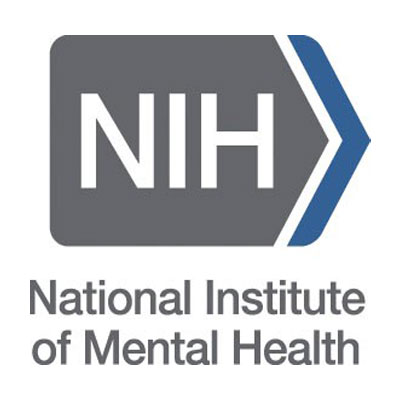
Social Anxiety Disorder
What Is Social Anxiety Disorder?
Social anxiety disorder, previously called “Social Phobia,” is more than feeling shy or moderately anxious in high-pressure social situations. Almost everyone feels a bit anxious in certain situations, like being on a first date, giving a speech, or during an interview.
In contrast, social anxiety disorder involves a great deal of fear about being embarrassed or humiliated in public. It’s marked by overwhelming anxiety in situations where other people might judge or criticize the person.
This extreme fear of criticism can lead quite understandably to avoidance of the social situations that trigger the anxiety.
For example, a person who is afraid of making a fool of herself when giving a talk may avoid taking college courses that require speaking in front of the class. Similarly, if the fear centers around meeting new people, the person with extreme social anxiety might avoid situations where he would need to meet someone new.
For those who don’t avoid their fears, their triggering situations provoke a great deal of distress, which can include anticipatory dread of the situation.
[Get my free e-guide, “10 Ways to Manage Stress and Anxiety Every Day“]
Components of Social Anxiety Disorder
Negative Thoughts
Social anxiety disorder tends to skew our thoughts about social situations, including what we think before, during, and after a social event. For example, if I’m going to give a speech I might be thinking “it’s not going to go well” as I prepare. During the speech I might look out and see someone yawn and think, “Just as I expected, I’m boring everyone.” Afterward I might look back on the speech and cringe, as I tell myself, “That was a painfully bad talk. I made a fool of myself.”
Most of the time these thoughts are not based in reality. For example, I may have noticed the one person who was yawning—because it was 4:00 pm and not because my talk was boring—and ignored the many people who looked interested and alert. I might also think that little mistakes I made were a big deal, like losing my train of thought for a few seconds. Most likely the audience didn’t think much of it, though I might harshly criticize myself as I replay it over and over in my mind.
Physical Symptoms
One of the big challenges in social anxiety disorder is anxiety about looking anxious. We might tell ourselves, “If I blush, people will think I’m an idiot,” or, “They’ll see my hands shake and lose all confidence in me.” And of course fearing these and other physical symptoms of anxiety makes us more likely to have them, leading to more physical manifestations of anxiety and more worry about them. In reality most people don’t think it’s a big deal when someone shows signs of social anxiety.
Focus on Self
When we’re intent on doing well in a social situation and not coming across as nervous, we’re likely to turn our attention inward to assess how we’re doing. We might monitor our physical symptoms—am I blushing? are my hands shaky? does my voice sound nervous?—and scrutinize everything we say. This excessive focus on ourselves increases our anxiety and can interfere with being present in the social situation.
Safety Behaviors
It’s easy to understand why a person would want to prevent the feared outcomes in Social anxiety disorder. Who wants to be publicly humiliated, or have other people think we’re inadequate? Thus we’re likely to do things to prevent what we’re afraid of, and these actions are called “safety behaviors.” For example, if I’m afraid people will see my hands shaking, I might keep them in my pockets as much as possible, or grip tightly to the lectern while giving a talk. If I’m terrified of not having anything to say during a one-on-one conversation, I might constantly be preparing what I’m going to say next.
While safety behaviors are understandable, they often have the opposite effect of what we’re going for. In the example of trying to hide my shaking hands, I might end up looking more awkward than I would if I just let people see my shaking hands. If I’m constantly thinking of what to say next so the conversation isn’t awkward, I might miss what the person is saying and actually create an awkward situation.
Avoidance
Fears about social situations can lead us to avoid these situations altogether. We might avoid any situation where we could meet new people, or drop classes when we learn that a presentation is required, or avoid leaving a job we hate because any new position would require an interview. In some cases we might design our life almost entirely around our social anxiety, habitually avoiding any situation that could trigger our fear.
What Is CBT for Social Anxiety Disorder?
The constellation of symptoms that makes up Social anxiety disorder also tells us what treatment will need to address.
Testing Thoughts
Once we’ve identified what our thoughts are about social situations, we can develop ways of testing those thoughts. We might be right, or our fears might be overblown. For example, if I believe that people think poorly of someone who blushes, I can look for research studies that examined people’s reactions to others’ blushing. The most meaningful tests of my anxiety-related thoughts will come from my own experience. For example, if I think people will criticize me if I talk in a staff meeting, I can make predictions about how they’ll react and then see what happens when I speak up. This approach is intimately related to facing our fears.
Facing Fears
Like any other fear, social fears grow with avoidance, and so a crucial part of CBT is gradually, systematically, and repeatedly facing our fears. You will come up with a list of situations you tend to avoid and will rate how difficult each one would be. You then would plan times to complete each activity.
People with a lot of social anxiety often find that their anxiety doesn’t go down even when they face their fears, and so it’s important that they situations be approached in a particular way. Specifically, we want the situations to be a fair test of our fears. The tricky thing about social anxiety is that it’s often not clear if our fears came true. With snake or height phobias, for example, it’s probably quite clear if something bad happened. But in social anxiety, how can we know if people were thinking poorly of us, or were bored, or felt awkward around us? Even if we asked them directly, they could lie to us to avoid conflict or hurting our feelings.
Thus we need to design activities that are a fair test of our fears. For example, how will we know if our talk was super boring? How will we evaluate whether we made a person we were talking to feel awkward? You can work (often with the help of a therapist) on ways to test your predictions, so that you’ll have a good sense of whether your fears came true.
Dropping Safety Behaviors
As mentioned above, safety behaviors generally are not helpful and can even be harmful to us. They also can reinforce our fears because if things go all right in a social interaction, we’re likely to tell ourselves it was because we did our safety behaviors. Part of being in social situations in a different way is letting go of the false sense that these behaviors are necessary, and facing our fears without them. In the end we generally find that we’re better off without our safety behaviors.
Focusing Outward
Directing our attention outward, toward the task at hand and the person or people we’re interacting with, is a final important component of CBT. By getting our attention off of ourselves, we can direct more of our energy toward what’s going on around us. And while it’s uncomfortable at first, our anxiety will decrease when we’re not constantly focusing on how we’re coming across. Thus we get to be more fully in our lives and in our relationships.
Additional Resources
Anxiety Disorder Information from ADAA
The Anxiety and Depression Association of America provides information about Social anxiety disorder; has a “Find Help” section with a “Find a Therapist” directory, links to support groups, information on treatment by phone, Internet, or email, a Mental Health Apps page, and a list of self-help books and other resources; as well as information for professionals.

